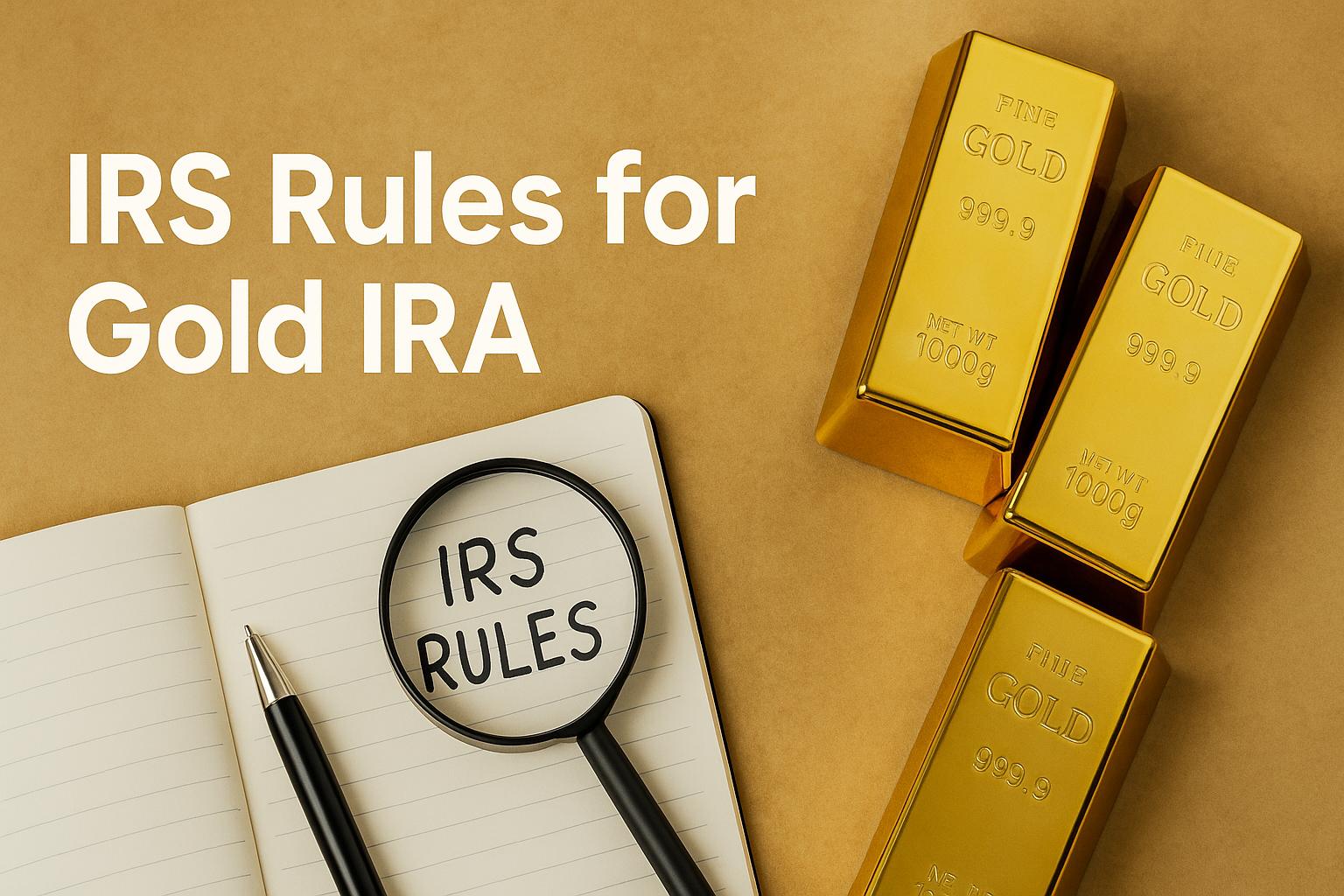When it comes to retirement planning, few options carry the same allure and perceived security as gold. For centuries, gold has been viewed as a hedge against economic downturns, inflation, and market volatility. Today, savvy investors are turning to Gold IRAs (Individual Retirement Accounts) as a way to diversify their retirement portfolios. But before you jump in, it’s critical to understand the IRS rules for Gold IRAs. They can be a bit more complex than traditional IRAs, and missing a key detail could cost you.
In this guide, we’ll break down the IRS regulations you need to know, in plain English. We’ll also offer helpful tips, and even some recommendations if you’re ready to explore further.
What Is a Gold IRA?
A Gold IRA is a type of self-directed IRA that allows you to invest in physical gold and other precious metals. Unlike traditional IRAs, which typically hold stocks, bonds, and mutual funds, a Gold IRA is backed by tangible assets—specifically IRS-approved forms of gold, silver, platinum, or palladium.
Gold IRAs offer investors the chance to add a physical hedge to their portfolios, which can be particularly valuable during times of economic uncertainty.
IRS Rules for Gold IRAs

While Gold IRAs offer compelling benefits, the IRS imposes strict rules to ensure compliance and avoid tax penalties. Here are the key regulations you need to know:
1. Type of IRA
To hold physical gold, you must open a self-directed IRA (SDIRA). This type of IRA gives you control over a wider range of investments than traditional IRAs, including precious metals, real estate, and private placements.
2. Approved Metals Only
Not all gold is IRS-approved. The IRS requires that the metals meet specific fineness standards:
- Gold: Must be 99.5% pure (24 karats).
- Silver: Must be 99.9% pure.
- Platinum and Palladium: Must be 99.95% pure.
Approved gold coins and bars include:
- American Gold Eagle coins
- Canadian Gold Maple Leaf coins
- Australian Kangaroo/Nugget coins
- Approved gold bars produced by COMEX or NYMEX-approved refineries
Unacceptable items include collectible coins, rare coins, or gold jewelry.
3. Storage Rules
This is one of the most crucial IRS rules: You cannot store gold at home.
The IRS requires that precious metals in a Gold IRA be held in an approved depository. These facilities are insured, secure, and regulated. Storing gold at home or in a personal safe will disqualify the IRA and can trigger taxes and penalties.
4. Custodian Requirement
You must use an IRS-approved custodian to administer your Gold IRA. The custodian is responsible for handling the paperwork, ensuring regulatory compliance, and arranging the purchase and storage of your metals.
Banks, trust companies, and certain financial institutions can serve as custodians. Make sure to vet them thoroughly.
5. Contribution Limits
Gold IRAs follow the same annual contribution limits as traditional IRAs. As of 2025:
- Under age 50: $7,000 per year
- Age 50 or older: $8,000 per year (including catch-up contributions)
Note that these limits apply across all your IRAs combined.
6. Distribution Rules
You can start taking distributions at age 59½ without penalty. Withdrawals before this age are typically subject to a 10% early withdrawal penalty and income tax.
Once you reach age 73, Required Minimum Distributions (RMDs) kick in. At that point, you must begin withdrawing a minimum amount each year. If your IRA is backed by gold, this may involve selling a portion of your holdings or taking physical possession.
Benefits of a Gold IRA
Understanding the rules is essential, but it’s just as important to know why investors are flocking to Gold IRAs:
- Diversification: Gold adds balance to portfolios heavy in equities or bonds.
- Inflation Hedge: Gold has historically maintained its value through inflationary periods.
- Security: Physical assets like gold are less vulnerable to market manipulations.
- Control: Self-directed IRAs give investors more say in where their money goes.
Potential Drawbacks
Of course, no investment is perfect. Here are a few things to consider:
- Fees: Gold IRAs often come with setup, storage, and custodian fees.
- Liquidity: Selling physical gold can take time, especially if the market is volatile.
- Complexity: There are more rules and regulations to navigate compared to traditional IRAs.
That’s why it’s so important to work with experienced professionals.
Tip: Consider consulting with a financial advisor who has experience with self-directed IRAs before investing.
Choosing a Gold IRA Custodian
Not all custodians are created equal. Look for one that:
- Has a strong reputation and positive reviews
- Offers transparent pricing with no hidden fees
- Provides a range of IRS-approved precious metal options
- Partners with reliable, IRS-approved depositories
Some top-rated companies even offer free guides or consultations to help you get started.
Rollover Rules
Already have a 401(k) or traditional IRA? Good news: You can roll it over into a Gold IRA.
Here’s how it works:
- Direct rollover: Funds are transferred directly from your existing IRA or 401(k) to your new Gold IRA custodian. No taxes or penalties.
- Indirect rollover: You receive the funds and must deposit them into a new IRA within 60 days. Miss that window, and you’ll face taxes and penalties.
Quick Tip: Always opt for a direct rollover when possible to avoid unnecessary risk.
Red Flags to Avoid
The precious metals industry isn’t immune to bad actors. Here are a few red flags to watch for:
- High-pressure sales tactics
- Promises of guaranteed returns
- Lack of transparency in fees or storage
- Encouraging home storage (which violates IRS rules)
If something feels off, trust your instincts. Legitimate custodians won’t rush you.
The Future of Gold IRAs
With global uncertainties and inflation concerns on the rise, interest in Gold IRAs is growing. The IRS rules are unlikely to get any looser, so now is the time to educate yourself and prepare.
Whether you’re in your 30s planning early or in your 60s diversifying late, gold can play a role in a balanced retirement strategy.
Final Thoughts
A Gold IRA can be a powerful tool for long-term wealth preservation, but it’s essential to follow the IRS rules to the letter. From approved metals to secure storage, from contribution limits to distributions, every detail matters.
With the right guidance, however, the process doesn’t have to be overwhelming. Take your time, ask questions, and partner with professionals who put your interests first.
Remember: This is about protecting your future. Do it wisely, and gold can become a valuable part of your retirement plan.

